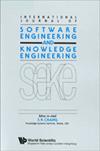从联邦法规代码中提取道义表达的软件工程方法-一个单一案例,嵌入式案例研究
IF 0.6
4区 计算机科学
Q4 COMPUTER SCIENCE, ARTIFICIAL INTELLIGENCE
International Journal of Software Engineering and Knowledge Engineering
Pub Date : 2023-10-27
DOI:10.1142/s021819402341005x
引用次数: 0
摘要
本研究对《联邦法规》第48篇《联邦采购法规体系》中的义务表达进行了全面分析,特别关注义务、许可、禁止和豁免。利用SHAMROQ这一系统而严谨的方法论,作者提取、分类和分析了这些表达,量化了它们的流行程度,并确定了法律文本中常见的语言模式。结果表明,在CFR 48中,义务(71.3%)构成了大多数道义性表达,这表明文件具有很强的规定性。许可也构成了重要的一部分(21.9%),这表明自由和许可是嵌入在监管框架内的。相比之下,禁止(5.4%)和豁免(1.4%)的频率较低,这表明文件更倾向于定义什么是需要或允许的,而不是明确禁止或豁免的。这项研究还强调了在提取过程中遇到的挑战,提供了对分析法律文本的复杂性和道义语言的复杂性的见解。这些挑战包括从解析复杂分层文档的技术困难到为法规和规定定义精确规则集的概念挑战。总之,结果加深了对软件工程中法规遵从性的理解,并有助于开发更有效和高效的自动化提取工具。本文章由计算机程序翻译,如有差异,请以英文原文为准。
SHAMROQ: A Software Engineering Methodology to Extract Deontic Expressions from the Code of Federal Regulations - A Single-Case, Embedded Case Study
This research provides a comprehensive analysis of deontic expressions within the Code of Federal Regulations (CFR) Title 48, Federal Acquisition Regulations System, specifically focusing on obligations, permissions, prohibitions, and dispensations. Utilizing SHAMROQ, a systematic and rigorous methodology, the authors extract, classify, and analyze these expressions, quantify their prevalence, and identify common linguistic patterns within the legal text. The results show that obligations (71.3%) form most deontic expressions in CFR 48, indicating the heavily prescriptive nature of the document. Permissions also form a significant part (21.9%), suggesting the liberties and allowances are embedded within the regulatory framework. In contrast, prohibitions (5.4%) and dispensations (1.4%) are less frequent, indicating that the document leans more towards defining what is required or allowed rather than what is explicitly forbidden or exempted. This research also highlights the challenges encountered during the extraction process, providing insights into the complexities of parsing legal texts and the intricacies of deontic language. These challenges range from the technical difficulties of parsing a complex hierarchical document to the conceptual challenges of defining precise rulesets for regulations and provisions. In summary, the results deepen the understanding of regulatory compliance in software engineering and contribute to the development of more effective and efficient automated extraction tools.
求助全文
通过发布文献求助,成功后即可免费获取论文全文。
去求助
来源期刊
CiteScore
1.90
自引率
11.10%
发文量
71
审稿时长
16 months
期刊介绍:
The International Journal of Software Engineering and Knowledge Engineering is intended to serve as a forum for researchers, practitioners, and developers to exchange ideas and results for the advancement of software engineering and knowledge engineering. Three types of papers will be published:
Research papers reporting original research results
Technology trend surveys reviewing an area of research in software engineering and knowledge engineering
Survey articles surveying a broad area in software engineering and knowledge engineering
In addition, tool reviews (no more than three manuscript pages) and book reviews (no more than two manuscript pages) are also welcome.
A central theme of this journal is the interplay between software engineering and knowledge engineering: how knowledge engineering methods can be applied to software engineering, and vice versa. The journal publishes papers in the areas of software engineering methods and practices, object-oriented systems, rapid prototyping, software reuse, cleanroom software engineering, stepwise refinement/enhancement, formal methods of specification, ambiguity in software development, impact of CASE on software development life cycle, knowledge engineering methods and practices, logic programming, expert systems, knowledge-based systems, distributed knowledge-based systems, deductive database systems, knowledge representations, knowledge-based systems in language translation & processing, software and knowledge-ware maintenance, reverse engineering in software design, and applications in various domains of interest.

 求助内容:
求助内容: 应助结果提醒方式:
应助结果提醒方式:


